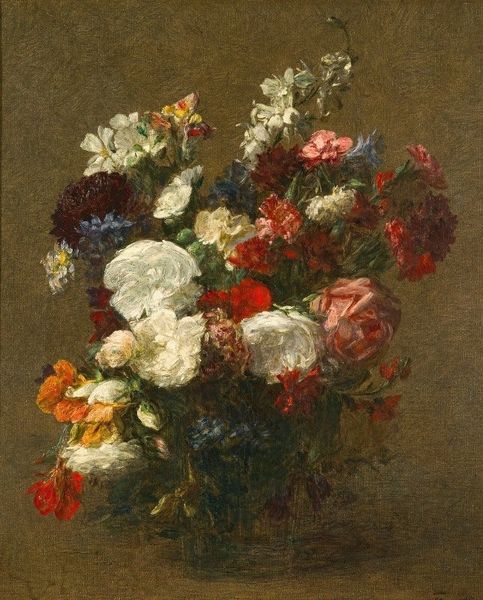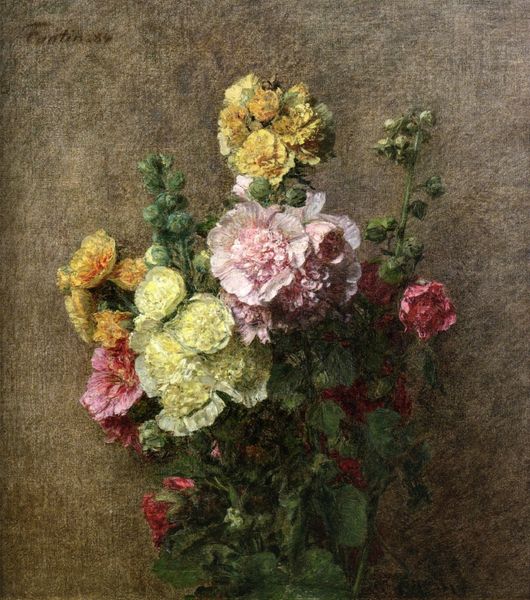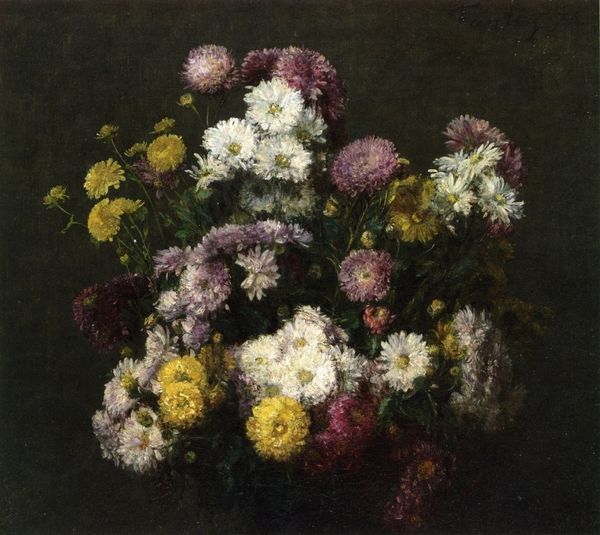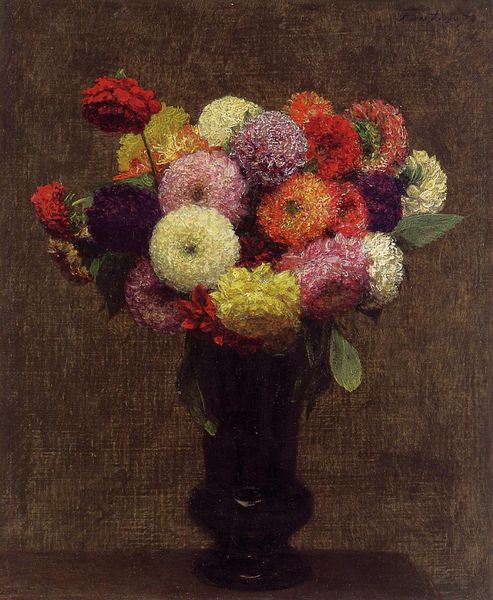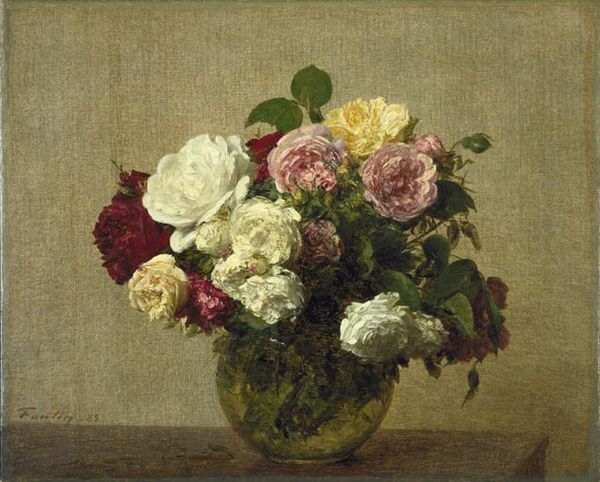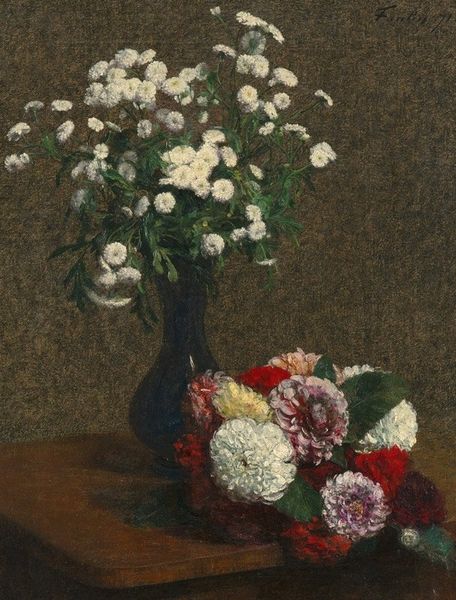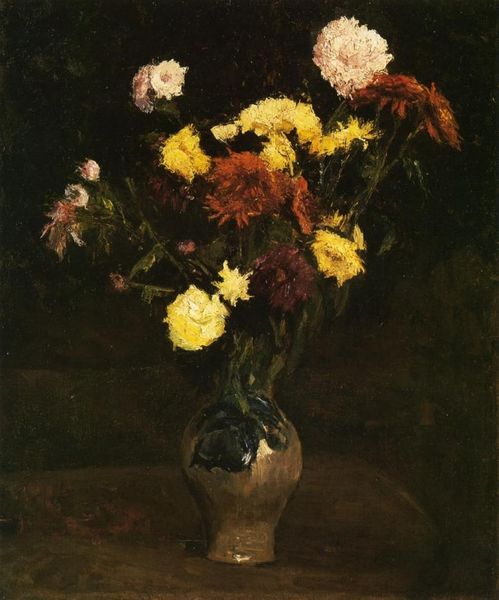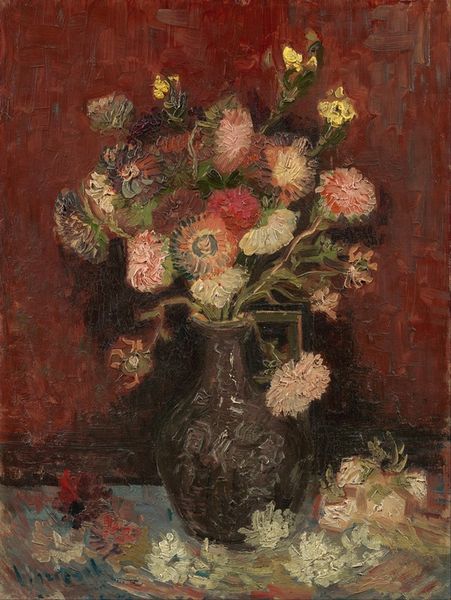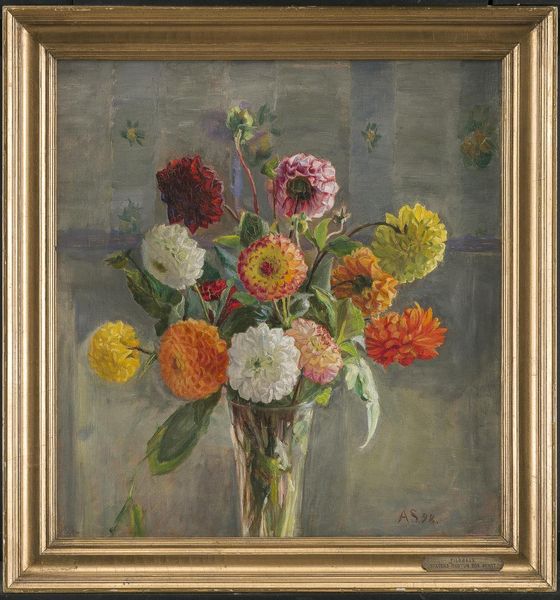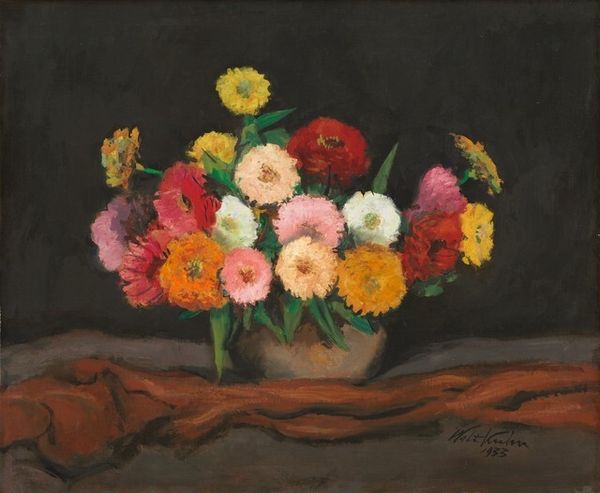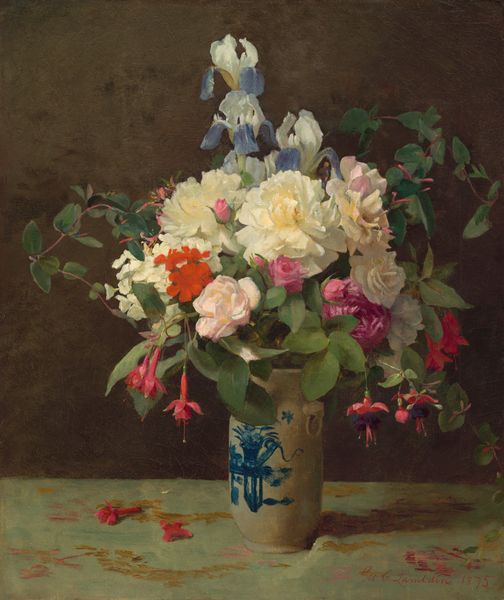
Copyright: Public Domain: Artvee
Curator: Here we have Henri Fantin-Latour’s “Zinnias,” painted around 1897. Editor: There's an immediate vibrancy, isn't there? The textures practically vibrate off the canvas, particularly given how the overall light diffuses softly. Curator: Fantin-Latour certainly masters that quiet luminosity. Observe the impasto technique, how the thick applications of oil paint build depth and catch the light. Editor: Absolutely. Thinking about the materials, the pigments must have been extraordinarily vibrant for the hues to maintain such intensity. What’s particularly compelling is how that contrasts with the subdued palette surrounding the blooms themselves. Were these blooms cultivated in his own garden or sourced from local vendors? I wonder about the cultural status of Zinnias at this time; were they a readily available bloom? Curator: An interesting thought. What truly fascinates me, though, is how the structure achieves such an effect through considered juxtapositions of colour. There's a calculated interplay of warms and cools. It’s interesting to me that these choices point towards impressionistic handling of colour. Editor: True. And looking closer, one notices how much implied labour it might take. Each blossom might've been selected deliberately. I imagine Fantin-Latour choosing which particular specimens spoke to him the most; perhaps engaging directly with his materials shaped the ultimate impact of the final work. Curator: The result creates an immersive harmony—something so perfectly imperfect that it almost perfectly transcends the traditional still life arrangement of floral studies of this era. It creates an intentional aesthetic value in defiance of academic art traditions. Editor: A defiance born from the tactile and the everyday. These paintings demonstrate a material commitment to observation but are steeped in the social lives and economics from the floral marketplace, where such displays of fleeting beauty would be acquired and ultimately appreciated in homes as displays of prestige. It's quite compelling how his artistic labour transforms these ephemeral objects into a lasting expression of beauty through skilled artistry. Curator: A captivating material record—a testament to visual structure that will still elicit visual experiences today. Editor: Indeed, a testament that continues to question not only aesthetic, but tangible and intangible notions.
Comments
No comments
Be the first to comment and join the conversation on the ultimate creative platform.

